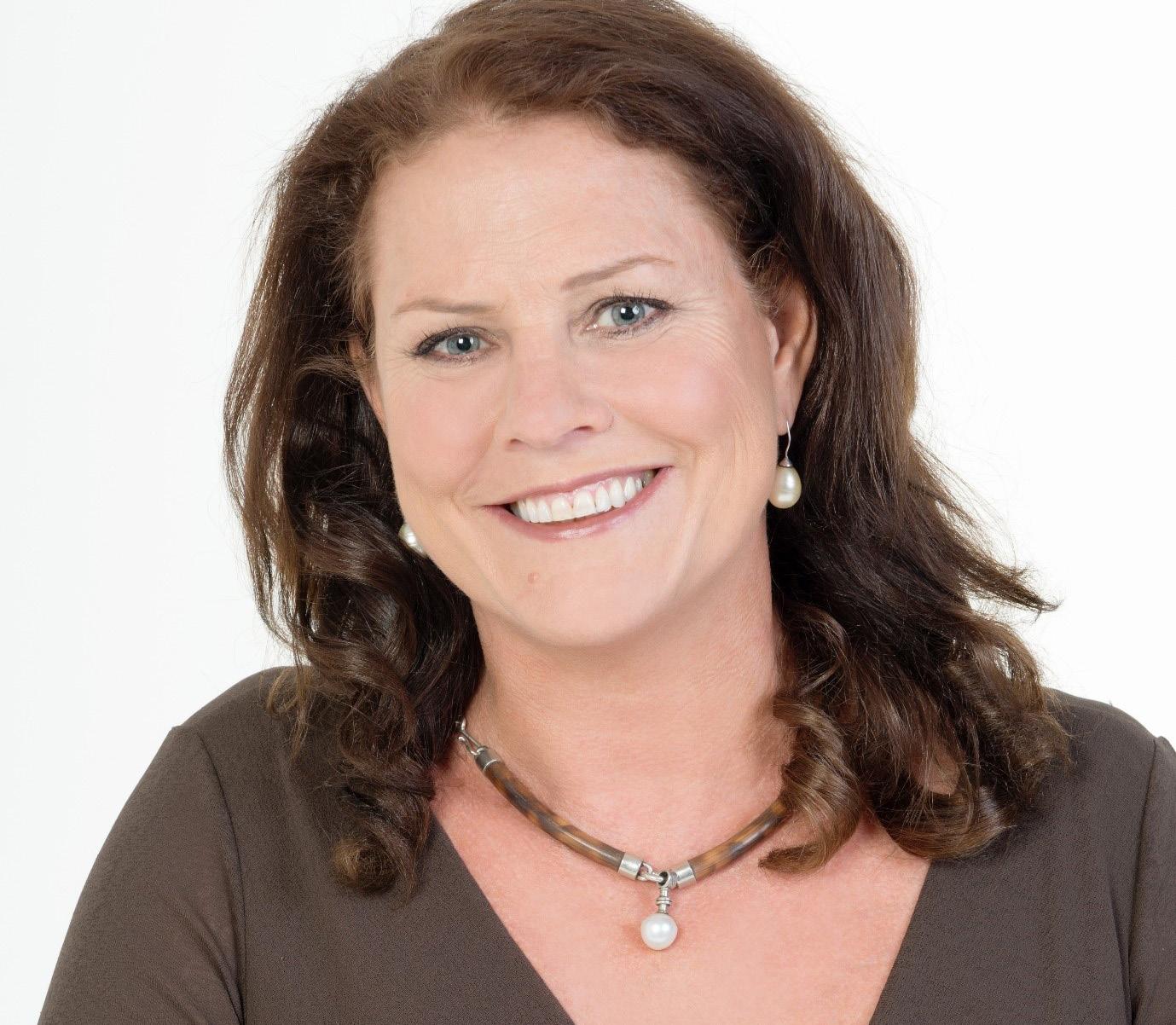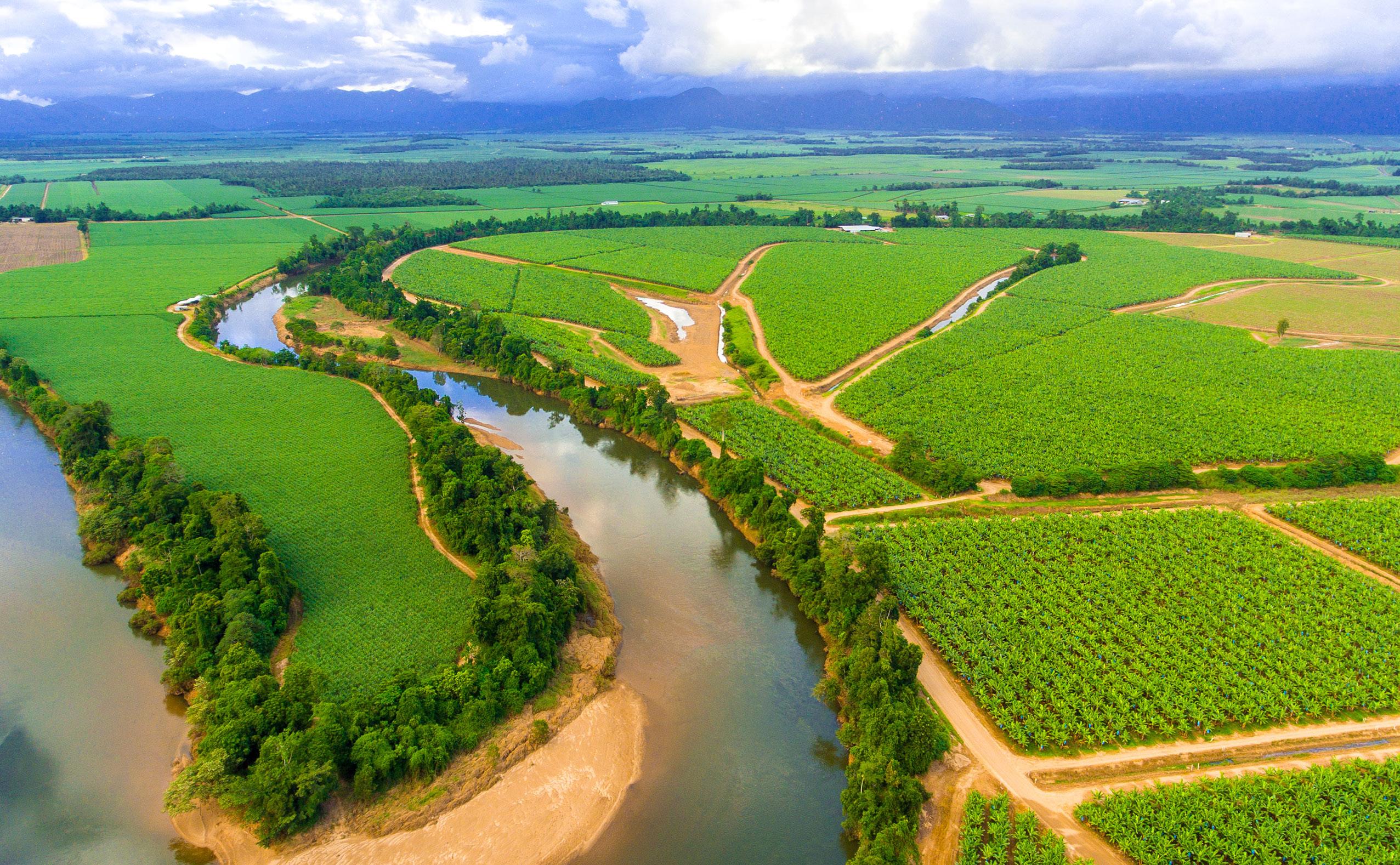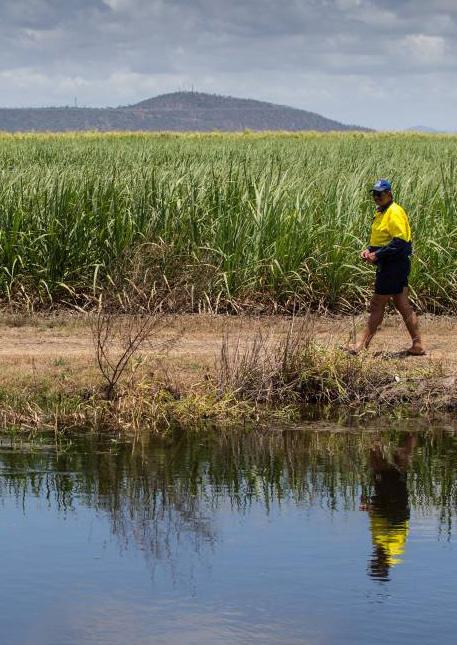
7 minute read
Reef


Advertisement

Reef MINISTERIAL BRIEFING NOTE
ORGANISATION
DELEGATION CONTACT
DELEGATES ATTENDING
DELEGATE ISSUES Cairns TNQ Convoy to CapitalQ
Advance Cairns, Tourism Tropical North Queensland and Cairns Chamber of Commerce are leading the region’s largest ever business delegation to Brisbane. The delegation includes more than 50 business leaders over a two-day period (February 18-19), representing 12 key business sectors to meet with State MPs and attend the Speaker’s Cocktail Reception.
Further information: Nick Trompf, Executive Chairman Advance Cairns E: nicktrompf@advancecairns.com | M: 0412 786 719
Reef:
Sheriden Morris
1. Sheriden Morris, Managing Director Reef & Rainforest Research Centre & Chair Cooperative Research Centre for Developing Northern Australia (CRCNA) 2. Mike Barry, CEO MSF Sugar 3. Stewart Christie, CEO Terrain NRM
Attached are bios on each delegate.
Reef issues to discuss:
• Reef Regulations
Attached are briefing papers on each issue.
WEBSITE LINKS
• Attendee biographies • Briefing papers


SHERIDEN MOR RIS MANAGING DIRECTOR REEF & RAINFOREST RESEARCH CENTRE & CHAIR CRC FOR DEVELOPING NORTHERN AUSTRALIA
Sheriden Morris has always strongly believed in intelligent, sustainable development using the region’s tropical expertise – the knowledge of living, building and working most effectively in the tropics.
Since 2006 she has been the Managing Director of the Cairns-based not-for-profit company Reef and Rainforest Research Centre (RRRC). Under her leadership, the RRRC has successfully attracted more than $240 million in grants and investment to support environmental research and development projects in northern Australia.
Sheriden is currently Chair of the CRC for Developing Northern Australia and is Deputy Chair of Citizens of the Great Barrier Reef. An extensive contributor to land and sea management policy, she has also spearheaded the development and implementation of an innovative aid development programme on Australia’s northern borderlands with Papua New Guinea.
She lives on the family farm at Babinda, just south of Cairns.
M IKE BARRY CEO MSF SUGAR
Mike was appointed to the position of CEO in February 2008. Before he joined MSF Sugar, Mike was previously managing director of the private equity-owned Hudson Building Supplies, one of Australia’s largest building supply companies.
For the ten years prior to holding that position, Mr Barry held a number of senior management roles within Boral Limited, the most recent being Regional General Manager for Boral’s Construction Materials business in Western Australia and South Australia, where he had responsibility for the company’s concrete, quarries, transport, pre-cast concrete, asphalt and mining activities in those regions.

STEWART C HRISTIE CEO TERRAIN NRM
Stewart is the CEO of Terrain NRM, an independent, not-for-profit community-based environmental management organisation that has been operating throughout Tropical North Queensland since 2003.
Terrain NRM has 40 staff and initiates collaborative, innovative and forward-looking solutions to the important natural resource management and economic challenges facing our region.
Stewart has extensive experience in economic development, the planning and delivery of large infrastructure projects and leading for-profit and not for profit organisations that create a positive triple bottom-line impact for our region.
COUNCIL: ALL TNQ STATE ELECTORATE: ALL TNQ FEDERAL ELECTORATES: LEICHHARDT, KENNEDY INDUSTRY DEVELOPMENT
REEF REGULATIONS
BRIEFING NOTE SUMMARY
• Polluted water is one of the biggest threats to the Great Barrier Reef. There has been significant investment by State and Federal governments since 2008 to reduce this threat.
• Progress is being made towards water quality improvement targets however modelling concludes that these approaches will be insufficient to meet the targets.
• The next wave of innovative solutions that addresses these challenges is needed. New approaches are being trialled in the Tully, Johnstone, Russell/Mulgrave and the Bowen, Broken and Bogie (BBB) River (Burdekin region) catchments.
• To maintain this momentum, capitalise on current interest and further expand the rollout of promising practices, further support and investment is required.

THE ISSUE Since 2008, targeted investment by the Queensland and Commonwealth Governments in various programs has reduced the nitrogen, sediment and pesticides entering waterways that flow into the Great Barrier Reef. This investment has been focussed on providing support to individual landholders, considering each farm separately, and establishing water quality monitoring at the end of catchments. The Queensland Government Environmental Protection (Great Barrier Reef Protection Measures) and Other Legislation Amendment Act 2019 was recently introduced to set a minimum standard to reduce the amount of nutrients, pesticides and sediment entering the Great Barrier Reef lagoon. The Act was implemented to regulate a minimum industry standard and encourage landholders that have not yet adopted Best Management Practices (BMP) to move toward BMP standards. Many commercial growers have already adopted industry BMP and believe that they are doing everything they can to improve water quality without impacting the financial viability of their businesses. However, while many landholders have adopted the straightforward practice changes that have a clear business and water quality improvement benefit, the 2016 Great Barrier Reef Water Science Taskforce
2020 STATE ELECTION PRIORITIES FOR TNQ found that even if 100% of farmers adopted currently accepted best management practices, it would be unlikely that water quality targets would be met. Trialling new approaches to complement best management practices is recommended by the taskforce. Recently, many sugarcane and banana growers have questionned the science that underpins the legislation, particularly the end-of-catchment water quality modelling that attributes pollution loads to individual catchments and the agricultural sector.
BACKGROUND To continue to improve water quality and simultaneously support landholder’s increased profitability, innovative approaches are needed. Key organisations in the region are working on new ways of increasing the uptake of voluntary adoption of best management practices. The focus is on working collaboratively with farmers to fully understand the local water quality issues, and in partnership with scientists and technicians, support farmers themselves to be the drivers of innovative, transformative solutions. With this new approach, trust and confidence is being built between landholders, community and scientists to collaboratively address the more complex and integrated challenges.
The National Environmental Science Program (NESP) has developed a project with leading commercial farmers that will result in assurances that water quality measurements are accurate and targeted. The project has now developed beyond its original intention into a grower-driven, strategically-placed, real-time monitoring system which, most importantly, has the input from the landholder as well as the scientific skill and mentoring of the researchers. Growers within the project have been analysing the results for several years and identifying water quality hotspots within their sub-catchment. Results have identified areas where farmers need to do more to manage and improve water quality leaving their farms. Results have also identified local water quality issues previously attributed to canefarmers that appear more related to other land uses and their impacts on local water quality. Properly attributing water quality issues to the correct cause with local, evidence-based research, provides growers with the information needed to address the correct challenges. Another example of innovation is the Terrain NRM Major Integrated Project (MIP), supported by $15 million of funding through the Office of the Great Barrier Reef, which involves 215 farmers in the Tully and Johnstone River catchments. The focus and benefits of the project are: • trialling new cost-effective water treatment and catchment repair systems such as bioreactors, wetlands and high-efficiency sediment basins that are removing high amounts of nitrogen and sedminent;

• providing water quality monitoring and data at farms rather than at the end of catchment, which is reducing costs, improving profitability and water quality and re-building confidence in science; • supporting uptake of promising new farm practices and creating peer-to-peer and cross-industry learning/support; and • developing an innovative, market-based solution (Reef Credits) that de-risks and provides an income stream for landholders to make and sustain changes that improve water quality and is being proven through 21 pilot projects.
NEXT STEPS There are hundreds of kilometres of drains throughout the agricultural areas of the Wet Tropics that have the potential to be cost effectively repurposed to remove nutrients. Targeted real-time monitoring and the adoption of new technologies has highlighted points of potential intervention in the pollution cycle. The NESP project learnings need increased resourcing to encourage wider adoption of changed farming practices while the MIP should be further expanded. In addition, the program should include analysis of flood plume characteristics of individual catchments, which may eventually lead to catchment based onground practices. Supporting these approaches deployed on the ground will accelerate the rate of water quality improvement, and support improved productivity and profitability of landholders will increase.
OUR RECOMMENDATION
To enable the Queensland Government, landholders and communities to be able to demonstrate and fully realise the impact of current investments for existing and other catchments, it is recommended that:
• $5 million be allocated towards expanding the NESP program and extension resources to encourage onfarm adoption of key learnings;
• $15 million be allocated to extend the Wet Tropics MIP to June 2025; and
• in collaboration with the Office of the Great Barrier Reef, Great Barrier Reef Foundation, Terrain NRM and NESP researchers, a pilot program be developed to trial the re-purposing of sections of the drainage network in the Wet Tropics.











